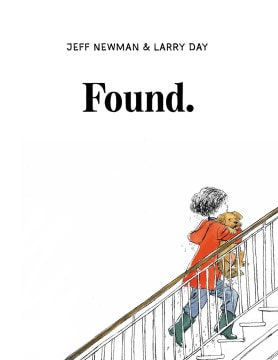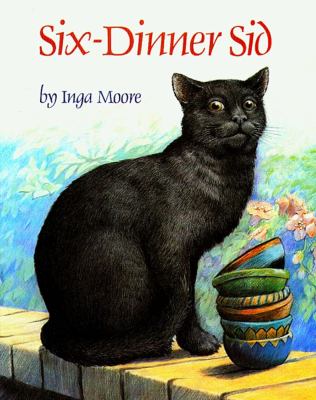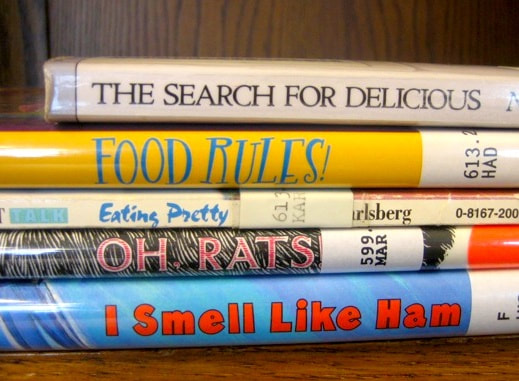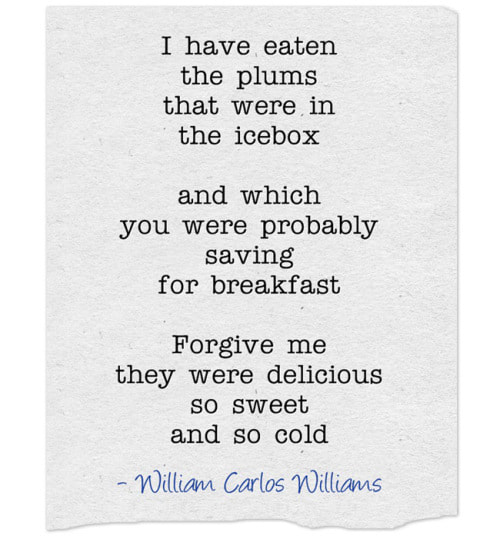Week of April 26, 2021 | TK
Ugly Ducklings... Beloved Older Books and Poetry Month
Video Little Bear presented by Children Storytime Classics
Minarek worked as reporter before becoming a first grade teacher and recognizing the need for children's books with simple words. She wrote over 40 children's books during her lifetime. Little Bear was her first. Little Bear is locally world famous as the singular text that taught Mrs. Snively to read before she was old enough to start Kindergarten.
Brown Bear, Brown Bear, What Do You See? by Eric Carle (1967)
Video Brown Bear, Brown Bear What Do You See? presented by Darren Robin McTurk
A satisfying cumulative rhyme in which children see a variety of animals, each one a different color.
Crafty Connection Brown Bear inspired craft using melted crayons.
Week of April 26, 2021 | Kindergarten
Ugly Ducklings... Beloved Older Books and Poetry Month
Video Petunia presented by Shannon R. Linville
When Petunia finds a book in the barnyard she believes she is wise because she carries it under her wing. But when her advice to the other animals goes all wrong she realizes that to be truly wise she must learn to read.
The Real Mother Goose, illustrated by Blanche Fisher Wright (1916)
A comprehensive collection of over three-hundred traditional nursery rhymes such as Wee Willie Winkie, Misty Moisty Morning, and Pease Porrige Hot.
Video Pease Porrige Hot presented by PinkFong
Kitchen Connection If pease porridge is something you'd like to try, here is a recipe.
Week of April 26, 2021 | First Grade | Ugly Ducklings
Compare and Contrast Beloved Older Books with Newer Books
Video Harry the Dirty Dog presented Storyline Online with Betty White
Harry is a white dog with black spots who loves everything . . . except baths. One day, before bath time, Harry runs away. By the time he returns home, Harry is so dirty he looks like a black dog with white spots and his family doesn't recognize him.
The Sky Dog, by Brinton Turkle (1969)
Video Sky Dog presented by Rachel White
A little boy is convinced that the white dog he finds on the beach is the same one he used to see playing among the clouds overhead.
A Dog Wearing Shoes, by Sangmi Ko (2015)
Video A Dog Wearing Shoes presented by Maya Condos
Mini finds a dog and begs to keep him. Based on a true story. The author's niece once found a lost dog with shoes on, and after returning him to his owner, she adopted a dog named Ray. Sangmi lives and works in Seoul, South Korea, with two adopted dogs, White and Malti.
Found, by Jeff Newman (2018)
Video Found presented by Carole Walker
In this wordless story, a young girl who has lost her own dog bonds with a stray and makes a tough decision about doing the right thing when the dog's owner is found.
Week of April 26, 2021 | Second Grade | Poetry Month
Compare and Contrast Beloved Older Books with Newer Books
Video The Outside Cat presented by WastelesslyWise
Samuel wants to get inside. He finally does, only to discover that the family and cat who were living there have moved. Now Samuel wants out, but he’s trapped in an empty house.
Six-Dinner Sid, by Inga Moore (1991)
Video Six-Dinner Sid presented by Ms. Shelly's Read Aloud
A clever cat lives with six families.
Won Ton : a Cat Tale Told in Haiku, by Lee Wardlaw (2011)
Video Won Ton presented by Julia and Girls Inc. of Greater Santa Barbara
Prefaced with a clear explanation of the traditional Japanese haiku, a three-line poem with seventeen syllables, written in a 5 | 7 | 5 syllable count. Often focusing on images from nature, haiku emphasizes simplicity, intensity, and directness of expression.
A cat arrives at a shelter, arranges to go home with a good family, and settles in with them, all the while letting them know who is boss and, finally, sharing his real name.
Connection Haiku worksheet
Week of April 26, 2021 | Third Grade | Poetry Month
Listen to a picture book told in verse and listen to a poem, then have fun creating poetry using the titles of books (details below).
Video A Sock Is a Pocket for Your Toes presented by amandpmstorytime
A poetic celebration of non-traditional pockets and what they hold, pointing out that a sock is a pocket for your toes and a vase is a pocket for a rose.
I'm Just No Good at Rhyming, by Chris Harris
Video I'm Just No Good at Rhyming presented by Tiffanie Bui
Play the video up to minute 1:17 to hear the title poem.
A frolicking romp through the zany world of nonsense verse.
Create Book Spine Poems Print worksheet It’s fun! It’s easy! It makes a bit of a library mess! Oh, well! Select three to six books with titles that inspire your poetic fire. Stack the books flat, one on top of the other, so the spines are visible. Move the books around until you like the way it reads, top to bottom. Write the titles on this worksheet the way you want the poem to read, top to bottom. Go over the titles with marker. Shade in each rectangle lightly with a different color crayon to create book spines.
Week of April 26, 2021 | Fourth Grade | Poetry Month
| | | |
Video A River of Words presented by Erin Boyington
This picture book biography of William Carlos Williams traces childhood events that lead him to become a doctor and a poet.
Delving Deeper Video The Canvas Williams and the artist Charles Demuth knew each other at university. I Saw the Figure 5 in Gold (1928) is one of a series of eight abstract portraits of friends, inspired by Gertrude Stein's word-portraits, that Demuth made between 1924 and 1929. This painting pays homage to a poem by William Carlos Williams and consists not of a physical likeness of Williams, but of an accumulation of images associated with him. Williams' poem The Great Figure describes the experience of seeing a red fire engine with the number 5 painted on it racing through the city streets.
Crafty Connection Video United Art and Education Project #170 Instructions for drawing a number then precisely segmenting the drawing in the style of I Saw the Figure 5 in Gold.
Note The usual Fourth Grade poetry month activity, making Blackout Poetry using discarded books, might be presented by the teachers this year, as it was done last year.
For Blackout Poetry instructions, click here and scroll to the week of April 15, 2019, Fourth Grade.
Week of April 26, 2021 | Fifth Grade | Poetry Month
Finding Hidden Poems in the Pages of Discarded Books
Video Nonsense presented by the Escondido Library
Profiles the education and eccentric brilliance of writer and artist Edward Gorey, discussing the creative process that led to more than 100 children's books and inspired a generation of creators, from Lemony Snicket to Tim Burton.
Create Hidden Poetry Choose a page from a discarded book and rip it out neatly. Don't read the words on the page. Draw the outline of any object and then choose your words from within the object. Look for words that fit your drawing. You will be surprised when they seem to emerge like magic from the object you have drawn. Lightly underline the selected words with pencil. When you are sure of them, box them in. And now you can draw freely, filling in the details of your object.
Video Hidden Poems by Miriam Paternoster (running time 3:28)



































 RSS Feed
RSS Feed